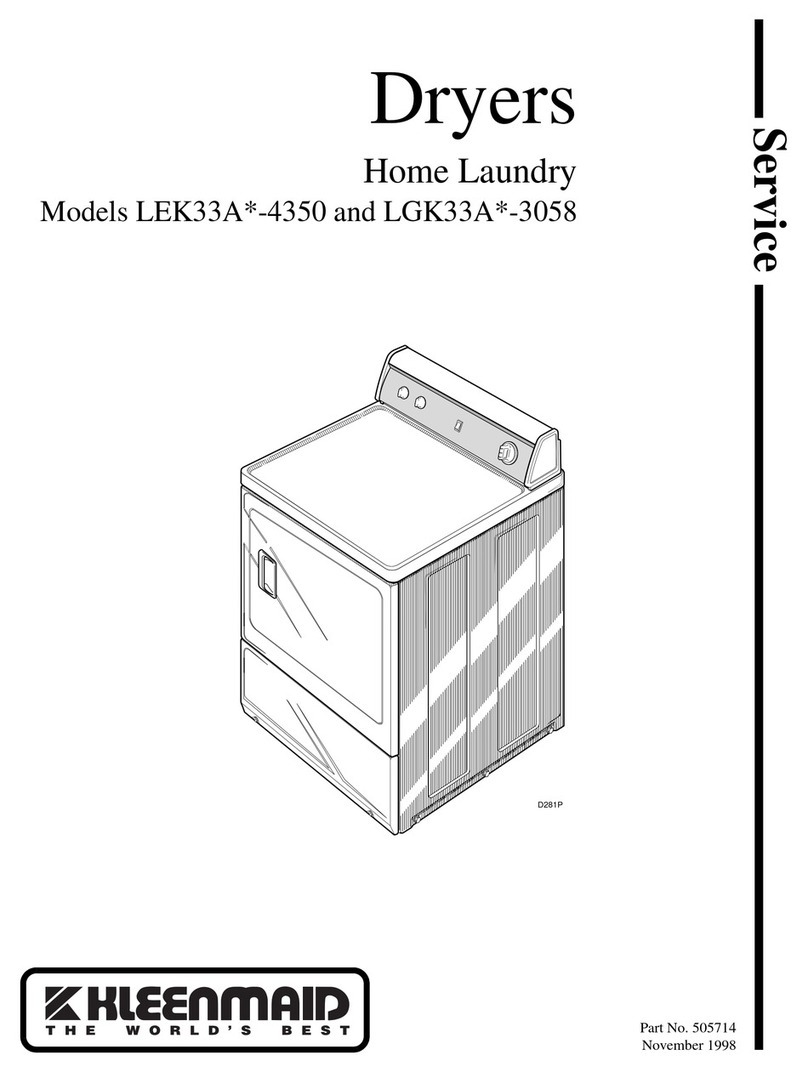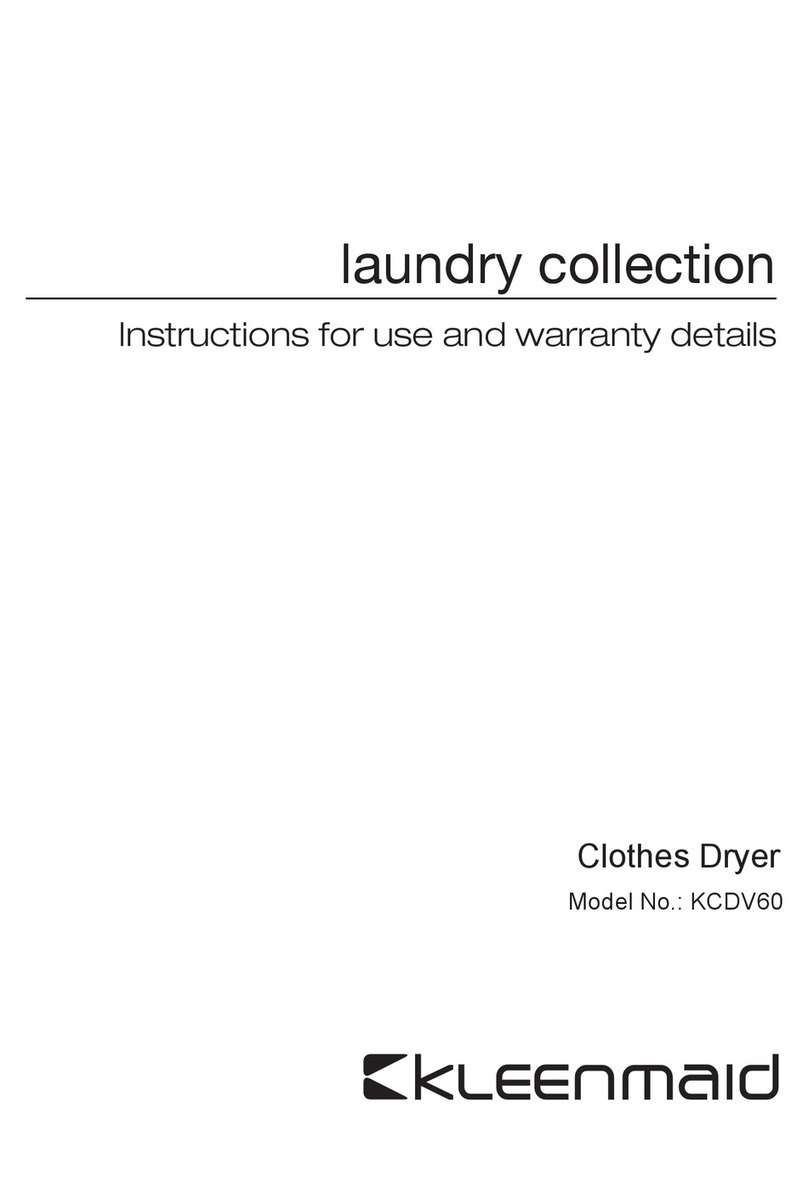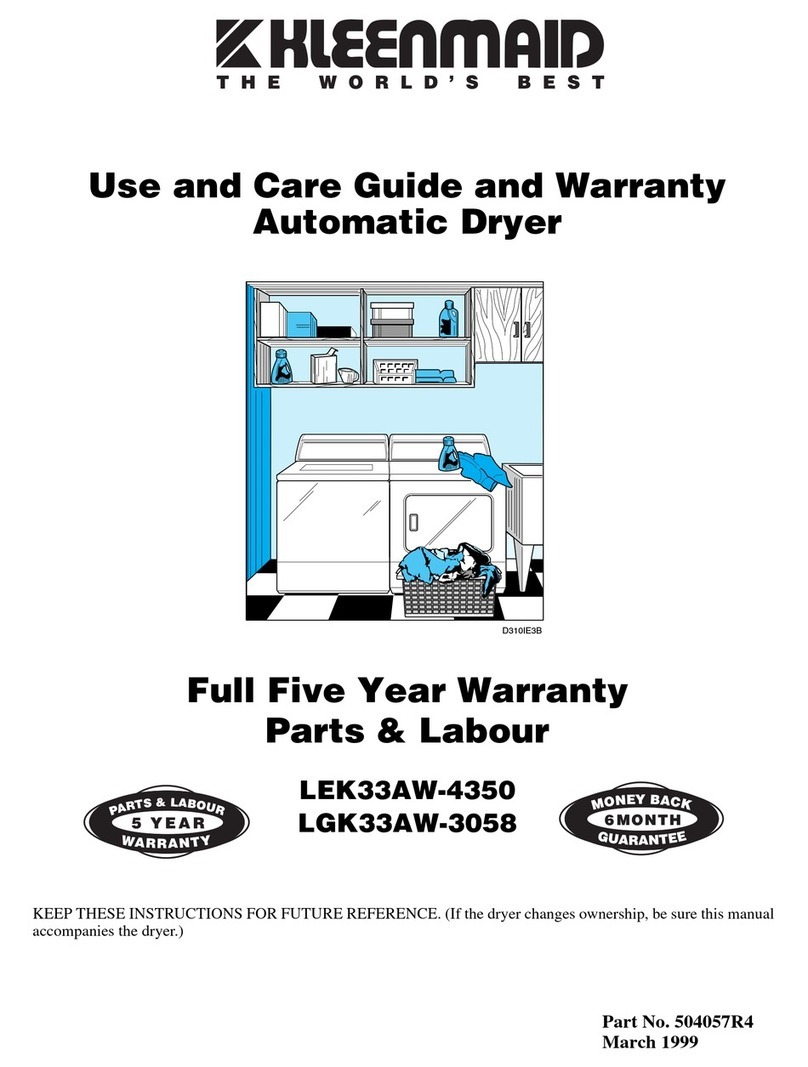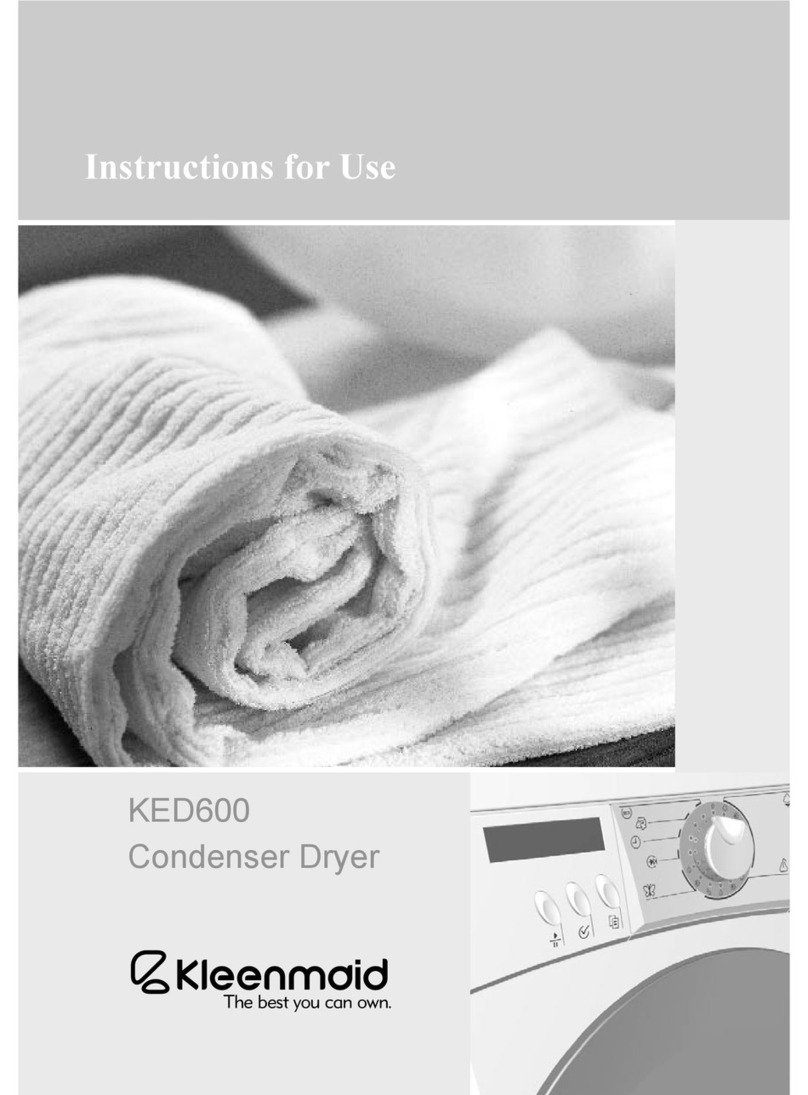
© Copyright, Alliance Laundry Systems LLC – DO NOT COPY or TRANSMIT
Safety Information
510954
6
9. Do not repair or replace any part of the dryer, or
attempt any servicing unless specifically
recommended in the User-Maintenance
Instructions or in published user-repair
instructions that you understand and have the
skills to carry out.
10. Do not use fabric softeners or products to
eliminate static unless recommended by the
manufacturer of the fabric softener or product.
11. To reduce the risk of fire, DO NOT DRY plastics
or articles containing foam rubber (also known as
latex foam) or similarly textured rubberlike
materials. Foam rubber materials can, when
heated, produce fire by spontaneous combustion.
12. Always clean the lint filter after every load. A
layer of lint in the filter reduces drying efficiency
and prolongs drying time.
13. Keep area around the exhaust opening and
adjacent surrounding area free from the
accumulation of lint, dust and dirt.
14. The interior of the dryer and the exhaust duct
should be cleaned periodically by qualified
service personnel.
15. This gas appliance contains or produces a
chemical or chemicals which can cause death or
serious illness and which are known to the State
of California to cause cancer, birth defects, or
other reproductive harm. To reduce the risk from
substances in the fuel or from fuel combustion,
make sure this appliance is installed, operated,
and maintained according to the manufacturer’s
instructions.
16. Dryer will not operate with the loading door
open. DO NOT bypass the door safety switch by
permitting the dryer to operate with the door
open. The dryer will stop tumbling when the door
is opened. Do not use the dryer if it does not stop
tumbling when the door is opened or starts
tumbling without pressing or turning the START
mechanism. Remove the dryer from use and call
the service person.
17. Do not put articles soiled with vegetable or
cooking oil in the dryer, as these oils may not be
removed during washing. Due to the remaining
oil, the fabric may catch on fire by itself. Oil-
affected items can ignite spontaneously,
especially when exposed to heat sources such as
in a tumble dryer. The items become warm,
creating an oxidation reaction in the oil.
Oxidation creates heat. If the heat cannot escape,
the items can become hot enough to catch fire.
Piling, stacking or storing oil-affected items can
prevent heat from escaping and so create a fire
hazard.
If it is unavoidable that fabrics contain vegetable
or cooking oil or have been contaminated by hair
care products be placed in a tumble dryer, they
should first be washed in hot water with extra
detergent – this will reduce, but not eliminate, the
hazard. The “cool down” cycle of tumble dryers
should be used to reduce the temperature of the
items. They should not be removed from the
tumble dryer or piled or stacked while hot.
18. To reduce the risk of fire, DO NOT put clothes
which have traces of any flammable substances
such as machine oil, flammable chemicals,
thinner, etc. or anything containing wax or
chemicals such as in mops and cleaning cloths, or
anything dry-cleaned at home with dry-cleaning
solvent in the dryer.
19. Use the dryer only for its intended purpose,
drying clothes.
20. Always disconnect the electrical power to the
dryer before attempting service. Disconnect the
power cord by grasping the plug, not the cord.
21. If supply cord is damaged, it must be replaced
with a special cord or assembly by a suitably
qualified service agent.
22. Install this dryer according to the
INSTALLATION INSTRUCTIONS. All
connections for electrical power, earthing and gas
supply must comply with local codes and be
made by licensed personnel when required. Do
not do it yourself unless you know how!











































